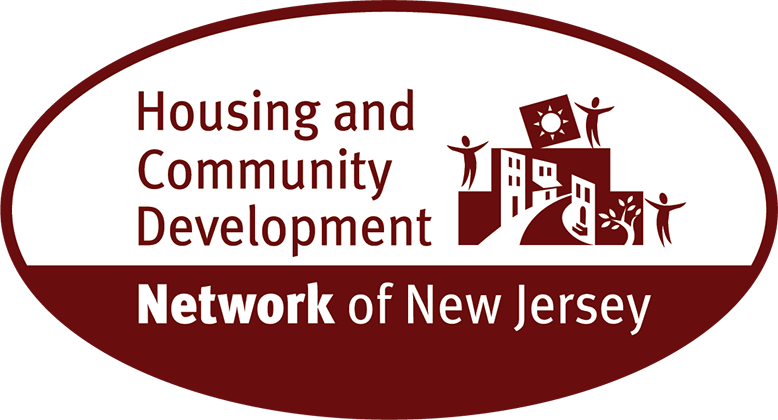| Growing need for affordable housing in Burlington County |
|
Published March 5, 2017 Many set out to fulfill the classic American dream of home ownership and never make it. Without a well-paying job, good credit and at least $10,000 in the bank for a down payment on a three-bedroom, two-bathroom house, low- and moderate-income families find it tough, if not impossible, to become homeowners, advocates of affordable housing say. The Baldwins are among the families that didn't think they'd ever own their own home. "We fell on hard times," said Princess Pakeel-Baldwin, who left her job to take care of her newborn son. When her husband, Lonnie, took unpaid leave to lend a hand, the bills piled up and they were evicted from their rented townhouse in Mount Laurel. "It was heartbreaking." After living with Princess' parents for a year, the couple was approved for a Habitat for Humanity house. They put up no money, but performed 400 hours of labor — "sweat equity" in Habitat terms — on the 1,200-square-foot Mount Holly home they and their three kids now call home. Habitat bought the rundown house and the Baldwins and Habitat volunteers rehabilitated it. More families like the Baldwins could find home ownership — and more affordable rents — possible in Burlington County as municipalities are required by a January state Supreme Court ruling to amend affordable housing plans to account for housing needs that arose from 1999 to 2015, when the State Council on Affordable Housing (COAH) failed to approve affordable housing rules and quotas for each town. The court order could see thousands of new housing units built in Burlington County as municipalities work with developers to meet their new court-ordered obligations. Many aren't waiting for the courts to impose housing numbers, and instead have or are working to reach settlements to satisfy their obligations. Ten Burlington County municipalities reached out-of-court settlements for that 16-year "gap period" approved prior to the Supreme Court's ruling last month. Sixteen others are in negotiations to reach similar deals, according to housing advocates. Plans by the 10 — Delanco, Edgewater Park, Florence, Maple Shade, Medford, Mount Laurel, North Hanover, Palmyra, Pemberton Township and Willingboro — were negotiated with nonprofit Fair Share Housing Center of Cherry Hill, which acted as an intervener in the litigation. Those 10 plans would add a total of 2,100 affordable units by 2025. Mount Laurel's affordable housing attorney, Tyler Prime of Prime Law, said: "It's clear the township made a smart decision when it did," because it avoided additional litigation costs and potentially the need to add more affordable housing. Florence administrator Richard Brooks agreed, saying: "If you do nothing, it's worse. It's better to control your own destiny from a planning standpoint." Here's a look at the highlights of the 10 affordable housing plans, including developments that are underway or have been proposed to be built by the 2025 deadline. Delanco Delanco will surpass that goal with the 63-unit affordable housing development that is proposed by The Walters Group of Barnegat, Ocean County. It will sit on 5.37 acres at 200 Rhawn St. off Pennsylvania Avenue. The former Rhawn Flange & Machinery Co. sat there for nearly 40 years. Edgewater Park They will include the under-construction Fox Run, off Cooper Street near Route 130, which will have 20 affordable townhouses for sale. Another site could include 24 rentals, but the location wasn't disclosed in the settlement because negotiations are continuing to finalize the development. And the township changed its zoning regulations for the Varsaci property, off Mount Holly Road, to include 17 affordable units if a rental development is built there. Florence Two developments, a four-unit rental project approved for 111 Norman Ave. and a 60-unit rental development proposed for a property off Route 130 and Hornberger Avenue, are included in Florence's affordable housing plans. Plus, township officials are negotiating with a developer to include 50 affordable rental units in a planned residential development on Railroad Avenue. Maple Shade They are: the rehabilitation of 149 apartments at The Arbors; a 350-unit apartment building on South Lenola Road; a 100-unit development on Brubaker Avenue; and a six-bedroom house for family services supportive housing. Medford About 70 rental units for seniors, military veterans and disabled individuals are planned for a site at the corner of Hartford Road and Route 70. Another 228 affordable units will be included in three market-rate developments: 48 rentals in a 178-townhouse community surrounding the Hartford Square development on Hartford Road; 90 affordable units out of 210 market-rate units in the Arc Wheeler development off Evesboro Road; and 90 affordable units in a proposed 450-unit housing development at the Flying W Airport on Fostertown Road. No sale of the airport has been announced and the owner said late last year there is no deal with the township. Mount Laurel Projects include new apartments, group homes, building low-income units within market-rate housing developments, and subsidies or grants for home purchases. Among the proposals: a development on Marne Highway that would have about 130 affordable housing units, or about 20 percent of the total units. Another 80 affordable units would be included in a 40-acre site near ARI property off of Leadenhall Road. The type of housing — homes or rentals — wasn't specified in the plan. Plus, the final phase of construction at the Ethel R. Lawrence Homes off Mount Laurel Road will add another 36 townhouses and 24 single-family homes for low- and moderate-income families. The project is expected to begin this year. North Hanover Palmyra To help meet that need, a 192-acre former industrial site just south of Route 73 will house a mixed-use development of stores, market-rate and affordable homes. The plan calls for 77 to 102 affordable family units and up to 25 age-restricted units. Borough officials are searching for a developer for that property. Pemberton Township While officials don't intend to adopt zoning that would require affordable units to be part of any market-rate development, they said the township will use money from its Small Cities Community Development Block Grant and its Affordable Housing Trust Fund to assist developers interested in building affordable housing. Willingboro Meanwhile, several proposed projects could be used toward the township's next round of obligations, including eight family-size apartments at the proposed Rose Street residential project and 43 rehabilitation projects around the township. 'Concrete steps' "There's an incredible need for affordable housing in safe neighborhoods where parents can send their kids to good schools and where they are close to (work)," Campisi said. "It's not going to happen (at once), but we think thousands of homes are going to be built pretty quickly as a result of the settlements we have now." Fair Share is adjusting its proposed affordable housing figures based on the court's new ruling, Campisi said, but the nonprofit doesn't expect much of a change from the 2015 report that estimated an unmet need of more than 200,000 housing units statewide. That change won't impact the 10 Burlington County municipalities with out-of-court settlements. Kevin Walsh, executive director of Fair Share Housing Center, predicted the court's decision would push more municipalities to reach settlements to immediately "address the state's housing affordability crisis." In fact, 16 Burlington County towns continue to negotiate their present and future affordable housing needs in court with Fair Share. All settlements need to be signed off by the state Superior Court. Officials of Burlington Township, one of the municipalities negotiating with Fair Share, said that the community wants to create more affordable housing through rehabilitating existing structures. "Our future development here is going to be limited (because officials believe the township is built out)," Township Manager Walt Corter said. Township officials want to focus on purchasing vacant, dilapidated homes, rehabilitating them and selling them at affordable rates to add to the municipality's estimated 400 affordable housing units, he added. While housing advocates see the Supreme Court ruling as a step forward to addressing housing needs for low- and moderate-income families, they — and others — believe more needs to be done. "The gap between the haves and have nots has been growing," said Charles Lewis, senior vice president of affordable housing development company, Conifer Reality LLC. "I don't think there's a commitment on the government level to do something." Michael Cerra, assistant director of the New Jersey League of Municipalities, agreed. He said the high court's recent decision failed to provide towns with a clear path toward meeting affordable housing obligations. And even after those obligations are finalized, he said, the state and federal government aren't providing enough money to prepare for additional affordable housing units. Anthony Marchetta, executive director of the New Jersey Housing and Mortgage Finance Agency, said developers look to federal subsidies to offset the cost to build affordable housing units and he doesn't see that funding increasing over the next decade. The federal Low Income Housing Tax Credit program allows qualified developers to purchase tax credits to offset the cost of building affordable housing. New Jersey receives about $20 million a year in federal subsidies from the Internal Revenue Services. But demands for the federal subsidy outpaces available funding three-to-one, Marchetta said. Even funding provided by the county has declined over the years, putting more of a strain on municipalities to come up with incentives, said Karen Trommelen, director of Burlington County Community Development and Housing. "Our piece of the puzzle has gone down," she said. "The (lack of) available resources ... is disconcerting to affordable housing developers," said Matthew Reilly, president and CEO of Moorestown-based MEND Inc, a nonprofit that has developed more than 700 units of affordable housing since 1969 in South Jersey. Reilly said it could take 50 years for developers to build the 200,000-plus affordable housing units proposed by the Fair Share Housing Center because of the ever-changing need in affordable housing and a shortage of funding unable to keep up with high demand. "It's an interesting time in New Jersey. People are focused on what's happening in courts, then on the other side there's (where's the money?)," he said. "I don't think anyone has the answer to that question." |










